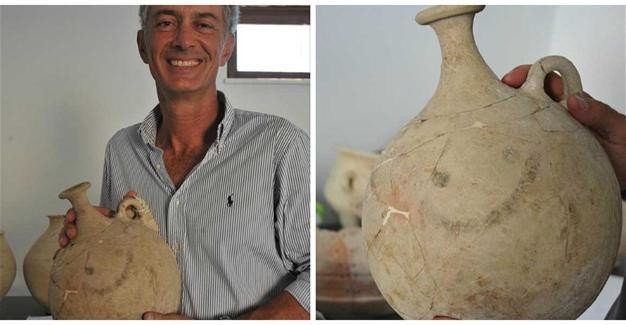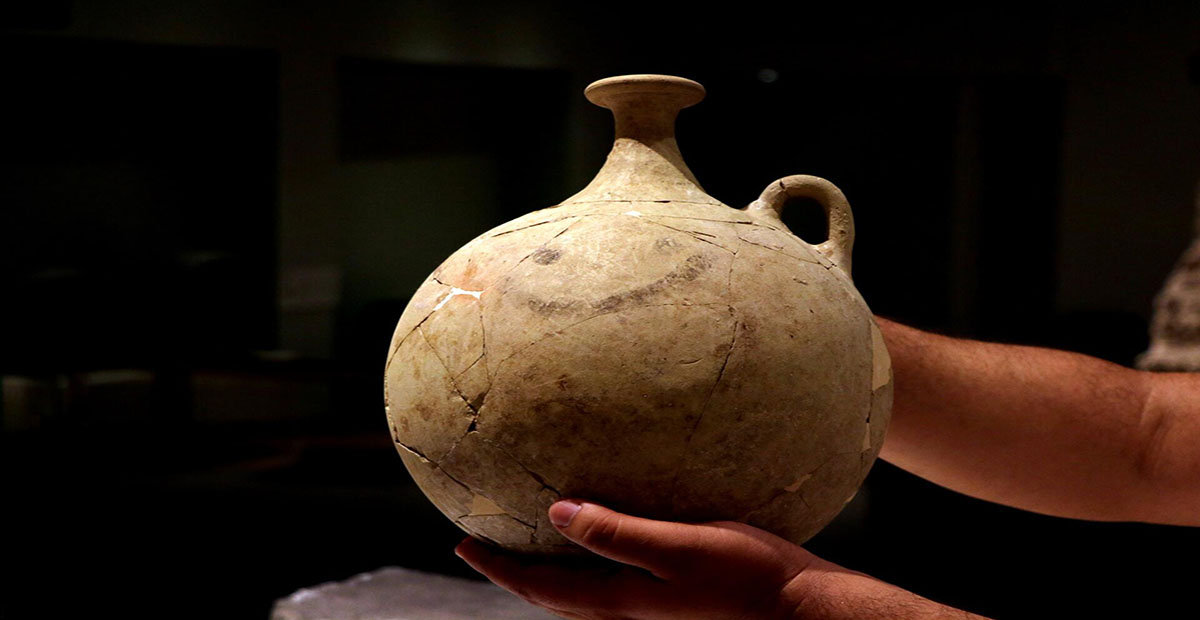The world’s oldest smile emoji is on display at an archaeological museum
The Gaziantep Archeology Museum will display a 3,700-year-old water bottle with a “smile emoji” on it that was uncovered in the ancient city of Karkamş in the southeastern province of Gaziantep around four years ago.
Visitors will be able to see the bottle at the end of the month when it will be displayed in the area of the Gaziantep Archeology Museum dedicated to objects uncovered during the Karkamş excavations.
The museum’s director, zgür Comak, told the state-run Anadolu Agency that Karkamş was one of the world’s most important ancient cities and that excavations have been carried out in the ancient city from time to time since the Republican era.
Karkamiş, on the Euphrates’ banks, was the Hittite period’s capital, according to Comak, who added that Professor Nikolo Marchetti’s excavations in the ancient city have continued.

One of the excavated items, according to Comak, was a water bottle with a smiley emoji on it.
“A terracotta bottle with a single handle dates back to the Middle Bronze Age. It’s an artifact from around 3,700 B.C. “This is the world’s first artwork featuring happy emoji,” Comak said.
“We have completed all museum work for this relic,” Comak said, adding that the artifact will be displayed in the museum by the end of July. It was discovered in several pieces and has since been restored.”
“The idea that the emoji we use every day in our daily life is a smile from 3,700 years ago, of course, raises curiosity,” Comak said, citing the positive feedback he received when he published the relic on social media.
Under the scientific guidance of Istanbul University’s Professor Refik Duru and Professor Belks Dinç, excavations in the ancient city of Karkamş, the southern capital of the Hittite Empire, which ruled in Anatolia in the second millennium B.C., were carried out by Professor Marchetti of Bologna University’s Archaeology Department and Associate Professor Hasan Peker of Istanbul University.




